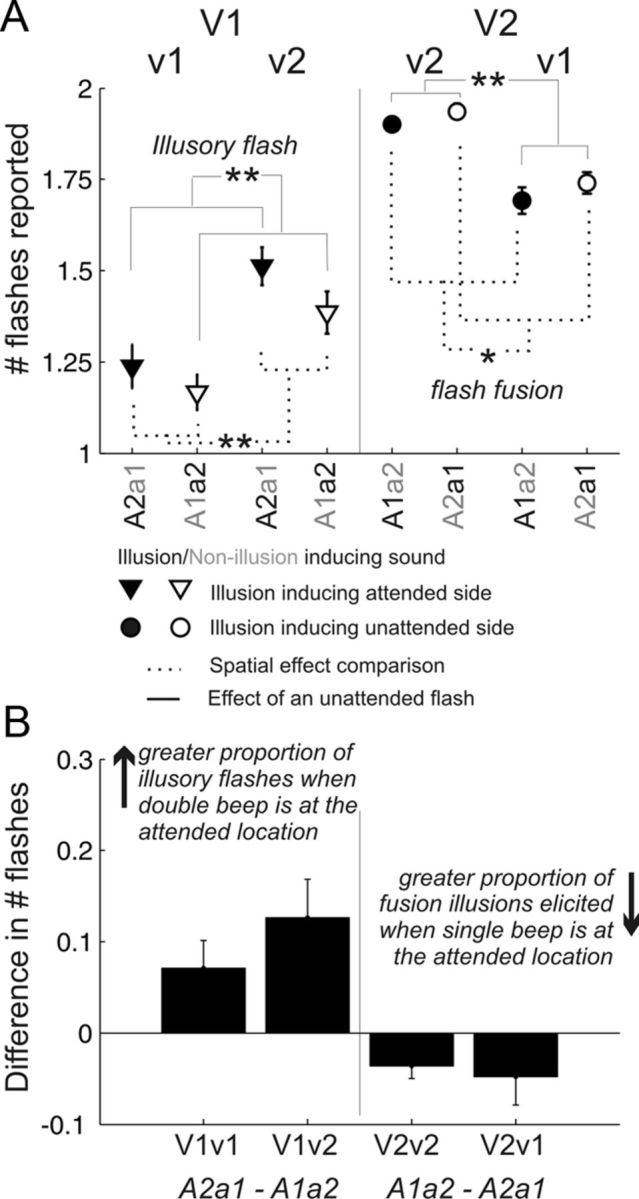Figure 3.

An acoustic stream from the same direction as a target visual stream is more likely to cause auditory-induced visual illusions than the same stream from the opposite hemifield. A, Reported number of flashes (mean ±SE) to stimuli differing only in the location of the illusion-inducing sounds. Filled symbols indicate the conditions where the illusion-inducing stimulus is from the attended side; open symbols indicate the same combination of stimuli but with the illusion-inducing stimulus from the competing side. On the left, the attended visual stimulus is a single flash (V1); a stronger illusory flash effect corresponds to a greater number of flashes reported. Correspondingly, on the right, a double flash (V2) is from the attended direction; a greater flash fusion effect results in a reduction in the mean number of reported flashes. When the illusion-inducing sound is from the attended side, subjects are more likely to report a visual illusion. Significant differences (pairwise Wilcoxon rank sum tests) are indicated by asterisks (*p < 0.05; **p < 0.01). B, Mean (±SE) of the difference in the reported number of flashes when the illusion-inducing sound is from the attended side versus the unattended side. Differences, calculated from the data in Figure 3A, demonstrate that stronger illusory percepts arise when the illusion-inducing stimulus is spatially congruent with the attended flash stream.
